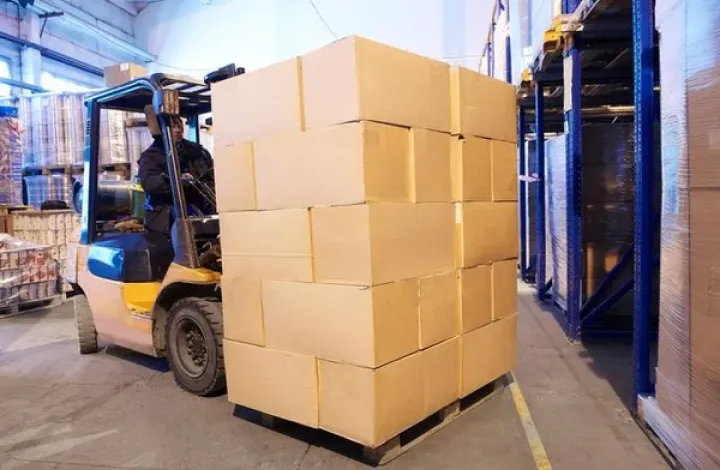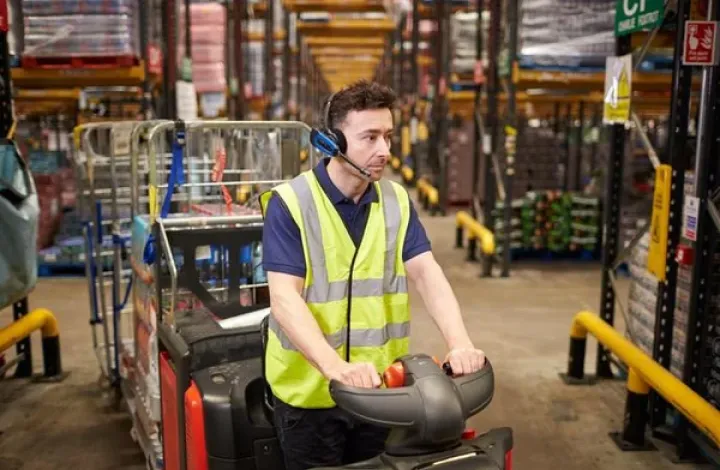According to Tony Scarriota, Executive Director of the Reverse Logistics Association, “Consumers feel entitled to return goods when they realize that they don’t want or need them.” Consequently, warehouses and distribution centers must optimize their reverse logistics process to effectively manage returned items.
As we mentioned in our previous article, this process is relatively new in the warehouse industry, so many companies are still unprepared to handle the high volume of product returns.
To help you, we will list some best practices you can follow to advance your reverse logistics process and provide a seamless return experience for customers.
Reverse Logistics Objective
The reverse logistics process entails the movement of goods from the point of consumption back to the point of origin to either reclaim value or properly dispose of wastes.
Optimization of the reverse logistics process in the warehouse aims to minimize the cost and time associated with processing returned goods, reduce the inventory levels of returned products, decrease the disposal time of the products, and maximize customer satisfaction.
When done successfully, this can lead to more loyal customers, increased sales, and a possible competitive edge in the marketplace.
How to Optimize Reverse Logistics Process:
A) Dedicate an Area for Returns and Categorize the Items As They Arrive
The first step when optimizing your reverse logistics process is to have an area dedicated to storing returned items. If you want to handle returns efficiently, you might want to consider expanding or optimizing your warehouse space. Research from CBRE estimates that the reverse logistics process will require an additional 15% to 20% over the space needed for traditional processes due to the unpredictable volume of returned items.
Once you have a specialized area for returns, it’s important to sort them by category. You can use the three-bin system – restock, discard, and return to supplier – to keep your stocks organized and ensure that each item is routed to its appropriate destination.

B) Determine Your KPIs to Evaluate Your Performance
A key performance indicator (KPI) is a tool to help you measure the success of your warehouse optimization initiatives. The following KPIs will allow you to closely monitor your reverse logistics process and determine how to achieve a cost-effective operation.
1. Return Rate
The rate at which sold items are being returned is most effectively used when the items are segmented by reason for return.
By this method, warehouse managers can analyze the causes of high return rates according to the given reason for return. For instance, when there is a high return rate due to incorrect products sent to customers, this could indicate problems in the warehouse’s picking process.
2. Cost Per Return or Exchange
Several costs are involved in the returns process, including inspection, sorting, and reverse pick-up. This KPI will help determine how much is spent per returned or exchanged item.
3. No Fault Found Rate
No fault found rate is a KPI used to determine the percentage of returned items with no defects. These items are easier to put back in the inventory and sell as unboxed or “good as new” items.
4. Total Cost of Repair or Refurbishment
Another KPI that should be tracked to optimize the reverse logistics process is the cost of repair or refurbishment for each returned product.
If you find that the costs are high for this metric, you have to find alternative methods to reduce the costs for repair and refurbishment.
5. Scrap Rate
This is the percentage of returned products that must be disposed of or used as scrap. The scrap rate needs to be kept to a minimum as this can be a source of high costs to the company.
C) Establish a Strict Policy for Return
Customer returns are almost inevitable, but a strict policy for returns can potentially alleviate the amount of unpredictable returns. Given this, it’s important for the clients of warehouses and distribution centers to establish a strict return policy so customers can have more control over the reverse logistics process. These policies could include charging additional costs for collecting returned items or a shorter period of accepting returns.
A strict return policy not only indicates confidence in the supplier but also helps reduce the amount of returns in warehouses. It also increases the likelihood of the item reaching the warehouse in good condition.
D) Consider Adopting Warehouse Mobility Solutions and Wearable Warehouse Technology
Technology is a key component when optimizing warehouse processes. Regarding the reverse logistics process, warehouse mobility solutions and wearables might be the most appropriate solution.
Handheld scanners, for instance, will allow warehouse workers to save time and energy over manually checking each returned item. At the same time, this warehouse technology decreases the probability of human error.
Furthermore, the adoption of wearables, particularly voice headsets, enables hands-free communication. Having two free hands allows warehouse workers to carefully check and identify the condition of each returned item, potentially improving warehouse safety.
The reverse logistics process is a constant challenge for the warehouse industry. However, it also presents a great opportunity to obtain a competitive advantage. Successful management of this process can maximize revenues, reduce costs, increase customer satisfaction, and help you stay ahead of the competition. We hope these practices will help you streamline your reverse logistics process and enable you to manage returns effectively.
To learn more about the rest of the warehouse processes, click here.
To start optimizing your reverse logistics process, go to our Solutions Finder tool.
For more information about warehouse technologies and optimizing other warehouse processes, you can follow us on LinkedIn, YouTube, X, or Facebook. If you have other inquiries or suggestions, feel free contact us here. We’ll be happy to hear from you.


















